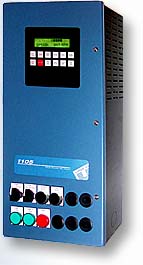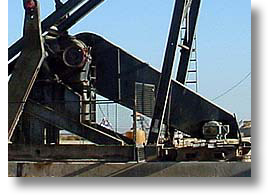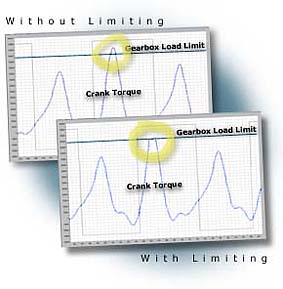Contact us for help in measuring and improving the energy efficiency of your wells.

TECHNICALLY SPEAKING:
 A Benchmark for Assessing the Energy Efficiency of Artificial Lifts
A Benchmark for Assessing the Energy Efficiency of Artificial Lifts
by Christopher Schmidt regional sales manager, western U.S./Canada & Mexico
Electrical energy is often the most significant cost component in the production of oil and gas. Given its importance to the financial performance of a project, it would be useful to have a bench mark for comparing the energy efficiency of a broad variety of wells and artificial lift systems. In these situations, we can use the "perfect system" to create a such a benchmark.
mark for comparing the energy efficiency of a broad variety of wells and artificial lift systems. In these situations, we can use the "perfect system" to create a such a benchmark.
For oil production, we can define the perfect system as one that uses all of the energy it consumes to lift fluid. The benchmark for this perfect system can be expressed as the amount of energy required to lift a given volume of fluid a known distance.
Assuming that the fluid has a density near that of water, we would have an energy consumption of 0.132 kilowatt-hours (kWh) for each barrel of fluid lifted 1,000 feet (see calculation below).
|
Lift Factor Calculation Assumes a fluid density of 0.0361 lb/in3 Fluid weight Work to Lift Energy consumption = 0.132 kWh/bbl |
As an example, a 5,000-foot-deep well producing 500 barrels of fluid per day would require a total of 330 kWh of energy per day just to lift the oil. This assumes 100% efficiency.
As a practical matter, power consumption is unlikely to be much less than 500 kWh per day. This would represent an overall efficiency of 66% and a figure of merit of 0.200 kWh per barrel per 1,000 feet. Artificial lift systems with relative energy consumption much higher than that should be investigated for potential improvement.
|
Lift Factors (kWh/bbl per 1,000 ft) |
|||||
|
API
Specific Gravity |
10 (1.000) |
20 (0.934) |
30 (0.876) |
40 (0.825) |
|
| Efficiency |
100%
|
0.132 | 0.123 | 0.116 | 0.109 |
|
75%
|
0.176 | 0.164 | 0.154 | 0.145 | |
|
50%
|
0.264 | 0.247 | 0.231 | 0.218 | |
|
25%
|
0.528 | 0.493 | 0.463 | 0.436 | |
PRODUCT WATCH:
Space-Saving Option Integrates Operator Devices with Variable-Speed Drives
 Unico offers drives in three configurations—chassis units for mounting in customer-supplied enclosures, NEMA 1 (IP23) units for installation in controlled environments, such as power houses, and NEMA 4 (IP66) packaged units for outdoor environments. Packaged units combine the drive, circuit breaker, and other system components into a single enclosure together with optional door-mounted operator devices such as selector switches, push buttons, indicators, and potentiometers.
Unico offers drives in three configurations—chassis units for mounting in customer-supplied enclosures, NEMA 1 (IP23) units for installation in controlled environments, such as power houses, and NEMA 4 (IP66) packaged units for outdoor environments. Packaged units combine the drive, circuit breaker, and other system components into a single enclosure together with optional door-mounted operator devices such as selector switches, push buttons, indicators, and potentiometers.
A new packaging option for NEMA 1 drives provides similar space-saving simplicity for indoor applications by integrating the operator controls with the drive itself. Often this eliminates the need for a separate control station. As many as 12 operator devices can be mounted directly to the door of the drive enclosure in prepunched holes. Unused holes are sealed with removable plugs.
Operator devices generally interface directly with the drive, which has provision for 12 digital inputs, six digital outputs, three analog inputs, and two analog outputs. Digital I/O can be either 24 V DC or 115 or 230 V AC/DC using plug-in converters. Analog I/O can be configured for 10 V DC or 20 mA operation. All digital and analog I/O points are completely programmable for specific applications using the IEC 1131-compliant programmable logic controller (PLC) resident within the drive.
Contact us to learn more about drive packaging options.
FEATURE FOCUS:
Protect and Extend the Life of Pumping Unit Gearboxes with Drive Torque Limits
 When a motor is operated directly across the line, there is no way to limit the amount of torque it delivers. Consequently, without a drive, your pumping unit's expensive gearbox is unprotected. While all Unico drives provide a means of limiting their torque output, our beam pump/Rotaflex application software goes a step further with a unique feature specifically designed to protect the gearbox.
When a motor is operated directly across the line, there is no way to limit the amount of torque it delivers. Consequently, without a drive, your pumping unit's expensive gearbox is unprotected. While all Unico drives provide a means of limiting their torque output, our beam pump/Rotaflex application software goes a step further with a unique feature specifically designed to protect the gearbox.
 Using basic information about the pumping system, the gearbox limiting feature reduces the maximum allowable torque limit as necessary to ensure that the gearbox is never overtorqued. Protecting the gearbox from excessive torque extends its life expectancy.
Using basic information about the pumping system, the gearbox limiting feature reduces the maximum allowable torque limit as necessary to ensure that the gearbox is never overtorqued. Protecting the gearbox from excessive torque extends its life expectancy.
Perhaps the best part of this feature is that it works automatically. During start-up, the software calculates the overall gear ratio between the motor and gearbox. Then, given the rated torque of the gearbox, together with a user-adjustable torque limit, the software determines whether the drive and motor are capable of delivering more torque than the gearbox can handle. If so, the drive’s torque limit is reduced to a safe level. A true/false parameter informs you whether or not gearbox limiting is in effect.
Gearbox limiting is just one of many features we've engineered to keep your wells productive. For more information, please contact us.
WHAT'S COMING UP:
In Future Issues...
Look for the following articles in upcoming issues of Oil & Gas Automation Solutions:
| A useful benchmark for artificial lift energy efficiency | |
| Space-saving option integrates operator devices and drive | |
| Capturing and displaying rod-pump dynamometer graphs with a Palm Pilot | |
| Conceptualizing the effectiveness of artificial lift systems | |
| Taking advantage of utility rate structures to reduce artificial lift energy costs | |
| Power loss components of a typical rod pumping system |
Oil & Gas Automation Solutions is a publication of Unico, Inc. Copyright © 2003 Unico, Inc. All rights reserved.
All trade designations are provided without reference to the rights of their respective owners.
![]() Unico, Inc., 3725 Nicholson Rd., P. O. Box 0505, Franksville, WI 53126-0505
Unico, Inc., 3725 Nicholson Rd., P. O. Box 0505, Franksville, WI 53126-0505
262.886.5678 / 262.504.7396 fax
oilgas@unicous.com / unicous.com